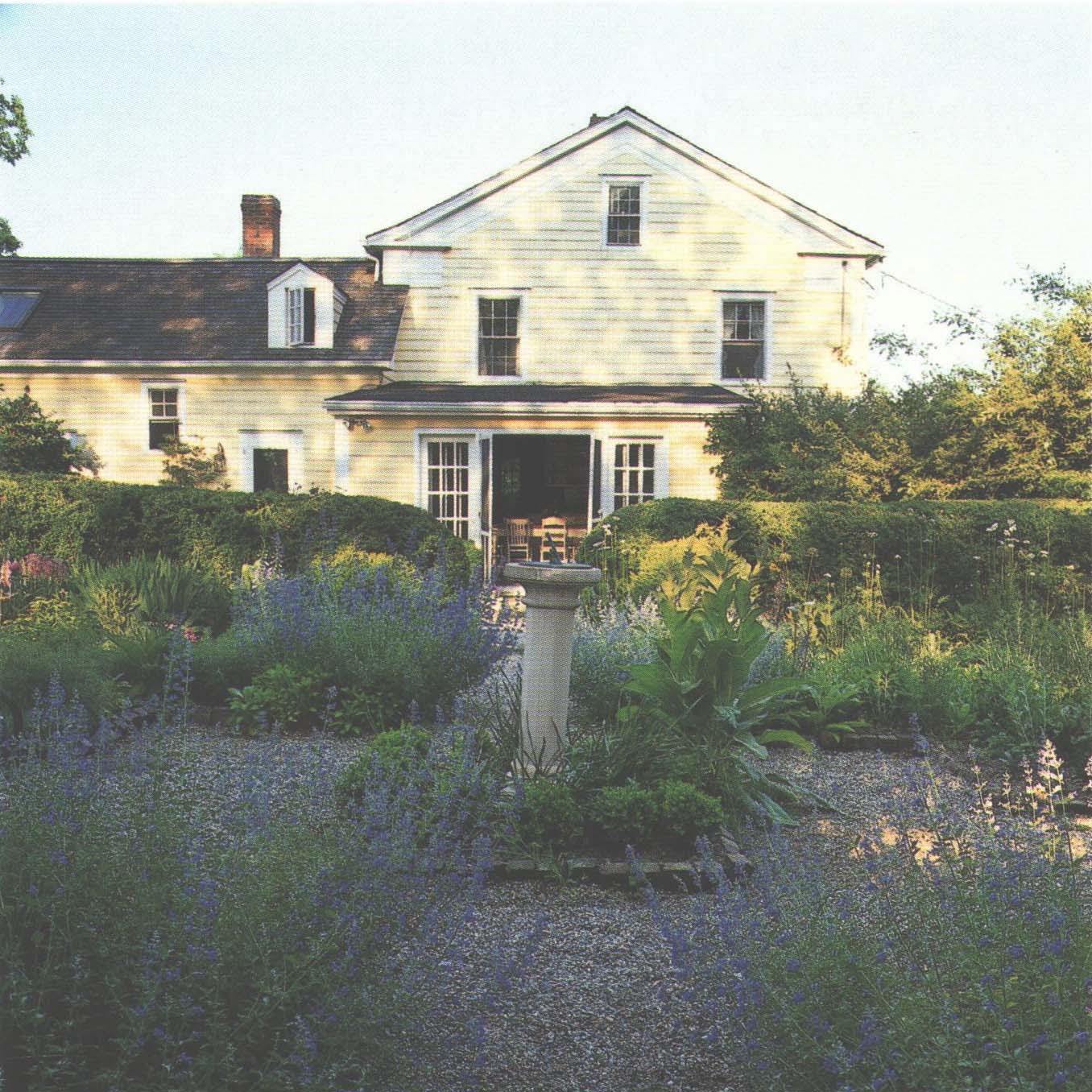 |
| Who wouldn't want to visit such a garden? |
The gardens themselves are uniformly lovely and certainly worthy of being included in this book. They range from small yards lovingly planted to magnificent old-money estates impressively landscaped. There are well-designed kitchen and cutting gardens, flowery bowers, formal boxwood parterres, shady Asian-inspired pond gardens, as well as wilder areas such as orchards, fields and marshy yards along Long Island Sound.
 |
| Or one such as this? |
However, I don't believe that Bass is a serious gardener herself, which shows in both her photographs and in the design of her book.
For most avid gardeners, students of garden design and serious visitors of gardens, when they read books that describe and depict gardens they want to understand the "essence of place" that is unique to each garden. Such books should be the next best thing to actually walking around a garden in person, which many people are not able to do because of distance, physical and/or budget limitations, or the private status of the gardens.
 |
| A beautiful fenced cutting garden. |
In order for armchair garden visitors to understand the essence of a garden, it is necessary to know a number of things:
- Where a garden is located (both its region and its setting, whether rural, small-town, suburban or urban) and how its location influenced the garden
- The basic history of the garden (the age of the house, the property and the garden, and how it developed over many years or in only a few years)
- The relationship of the garden to the house, in style and layout
- Any significant plant collections or garden areas
- Something about the maker(s) of the garden (the reasons behind the garden; how much experience the gardener(s) have had -- is the gardener a professional landscaper or a little old lady who made the garden over a period of 50 years with her husband?; any specific influences on the garden such as extensive travel in the Far East, etc.)
- The basic layout of the property, orienting it to the four cardinal directions, showing the relationship of the garden areas to each other and to any major landscape features such as mountains, large bodies of water, ancient forests, farm fields, etc. A basic property map is very helpful.
- The climate of the garden, temperature ranges, sun patterns, significant wind directions, type(s) of soil, and any other conditions that aided or discouraged the making of the garden
- Whenever possible, photos should be taken over the course of a year, so that the garden can be seen through the changing seasons
 |
| A lovely photo of a dew-covered peony, but despite the unique beauty of each flower, including more flower closeups means fewer photos and text that show readers about the garden itself. |
Unfortunately, this book (and most other books that present short portraits of gardens) does not allow enough space for written material about each garden, in order to allow more space for lovely photographs. (I don't know whether the author of the written garden introductions in this book, Suzanne Gannon, who mostly covers interior design for magazines, is an experienced enough gardener to cover these points, had she been allowed the space to do so.) This type of book should undoubtedly feature fewer gardens in more depth, so as to satisfy gardeners' longings for more meaningful armchair visits.
Also, in my opinion the book contains far too many closeup shots of flowers (I guess photographers love these), and not enough photographs that show the overall layout of the gardens and their relationship to their houses and settings. This seems like the art of the photographer getting in the way of transmitting the art of the gardener.
In fact, for nearly half of the gardens, no photographs of the houses are included at all. This might be out of concern for the privacy of the garden owners, or perhaps because a house simply doesn't photograph well...
 |
| Lovely, but again, something is missing. A large, mysterious presence that is always just out of sight.... |
 |
| House and garden shown together. What could be more right? |
Again, this book is chock full of beautiful photos of flowers and gardens, but readers who are serious about gardening or garden design may be left wanting more. (For a book as seriously written as it is photographed, see "The New English Garden" by Tim Richardson and photographer Andrew Lawson.)

























